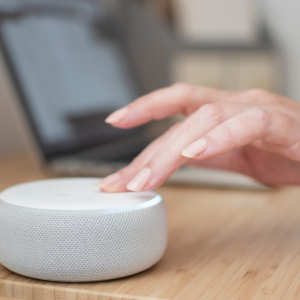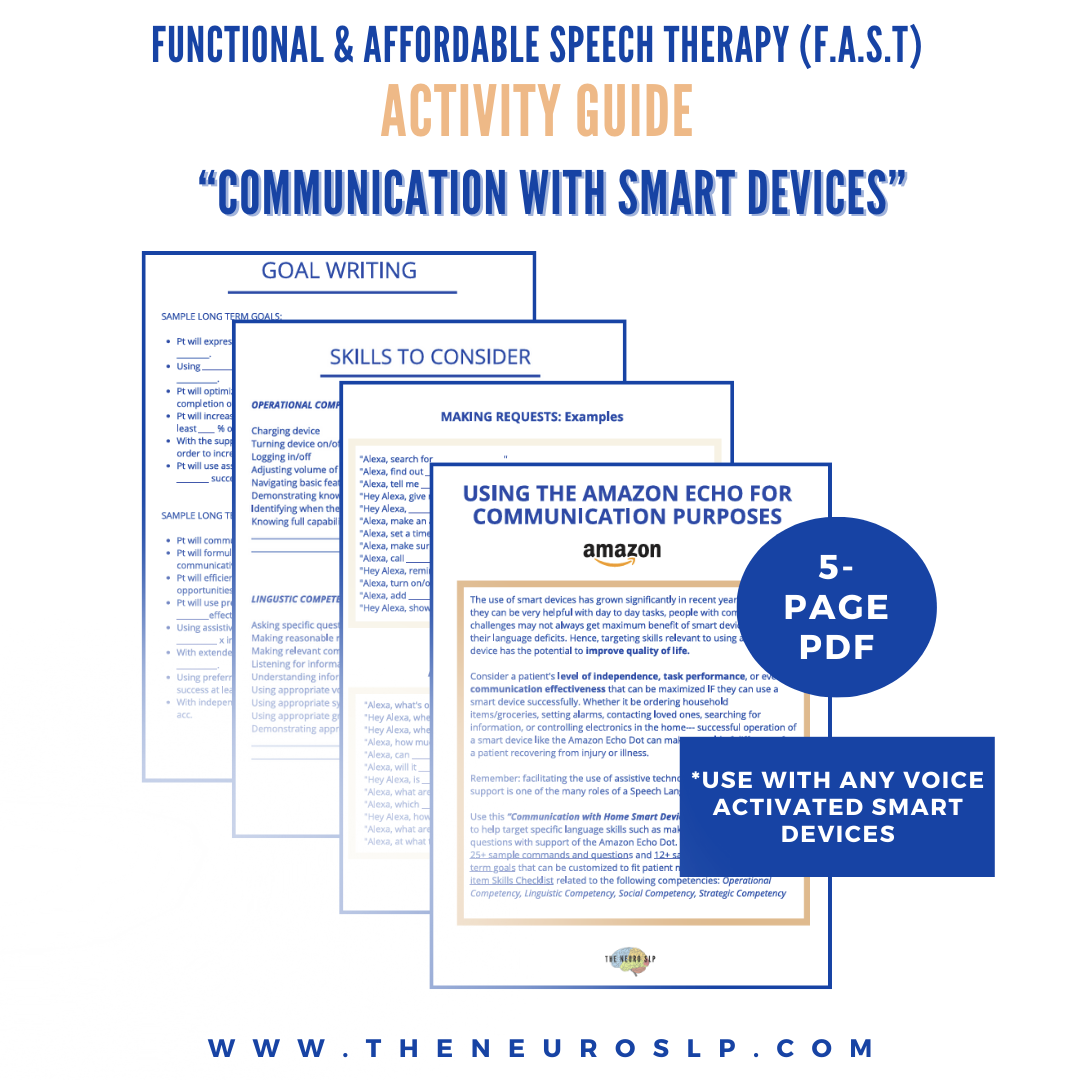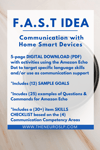More and more people are using home smart devices these days. In fact, it is estimated that in 2021, over 40% of households had some type of smart device in their home. The most popular home smart devices are Amazon Echo, Google Home, and Apple Home.
People are using voice-activated home smart devices to set alarms, order groceries, contact loved ones, search for information, hear jokes lol, and so much more. Some people are even using this smart technology to control electronic devices in the home (i.e., light switches, ceiling fans, thermostats). Given the access to information, entertainment value, and assistance with daily tasks that these home smart devices provide, they allow for a level of independence that otherwise may not have been possible.
However, those with neurological changes may not get the maximum benefit from these home smart devices because of their associated challenges (cognitive or communication challenges). That's why I created a F.A.S.T (Functional Affordable Speech Therapy) Activity Guide to help SLPs incorporate smart technology as communication supports for patients. In this “Using Smart Device for Communication” F.A.S.T Activity Guide, I have included 25+ sample commands and questions, 12+ short term goals and long term goals, and even a Skills Checklist to help you help your patients navigate using their home smart devices (if they have one) or identifying if purchasing one would be appropriate.
A Speech Language Pathologist could ask, “How is patient with slurred speech supposed to successfully use a voice activated smart device?” or “What if my patient has word finding difficulty so they get “stuck” giving commands to their smart device?” or “What if my patient can’t remember what to do?”
My reply is simple: Isn’t that what the patient is coming to see you for? For better communication? For better cognition? Incorporating a voice activated home smart device like Amazon Echo or Google Home allows for more therapeutic practice, real time feedback, and so much more in a speech therapy session.
NOTE: Aside from communication, a study by Hu et. al (2023) found that a group of individuals with TBI related symptoms had 4 different use patterns for an Amazon Echo: 1.) mental health support 2.) healthcare and rehabilitation support 3.) support for cognitive activities 4.) support for routine activities. Hence, communication isn’t even the only benefit of these devices.
Don’t miss out on great opportunities for contextualized, meaningful communication activities such as these. Download your copy of the "Using Smart Devices for Communication" F.A.S.T Activity Guide HERE and be sure to use the PROMO CODE “SMART” for 20% off at checkout.
As always, have some amazing therapy sessions!
-Dana (The Neuro SLP)
Relevant Research
Hu, Y., Lim, H., Johnson, H. L., O'Shaughnessy, J. M., Kakonge, L., Turkstra, L. S., ... & Mutlu, B. (2023). Investigating the Day-to-Day Experiences of Users with Traumatic Brain Injury with Conversational Agents.
Layden, C. A. (2018). Relationship Between Intelligibility and Response Accuracy of the Amazon Echo in Individuals with Amyotrophic Lateral Sclerosis Exhibiting Mild-Moderate Dysarthria.
Wallace, T., & Morris, J. (2018). Identifying barriers to usability: smart speaker testing by military veterans with mild brain injury and PTSD. In Breaking Down Barriers: Usability, Accessibility and Inclusive Design (pp. 113-122). Springer International Publishing.






Comments ()